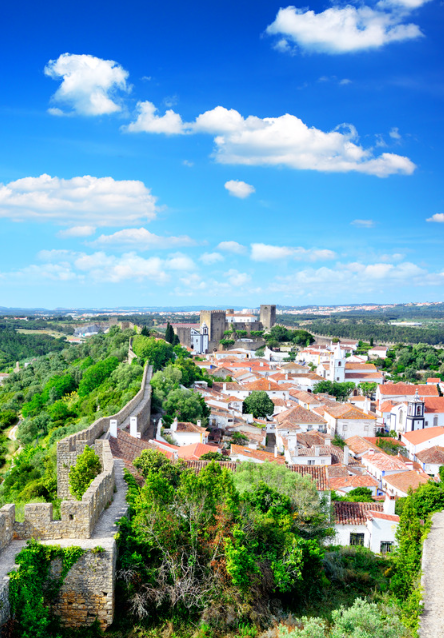Fátima, Batalha, Nazaré & Óbidos
Fátima: Known as the “White City” and a “City Museum,” Évora has been a UNESCO World Heritage site since 1986. Its development is closely linked to the Apparitions of Fátima in the early 20th century, making it a significant center for the Cult of the Virgin Mary. The first apparition occurred in 1917 at the site of the current Sanctuary. Major celebrations are held on May 13th and October 13th, with monthly devotions on the 13th between these dates. Visitors can explore the houses of the shepherd witnesses in Aljustrel and the monument to the second apparition of the Angel of Peace in the gardens of Casa de Lúcia. The Via Sacra, ending in the Sanctuary, features 14 chapels donated by Hungarian Catholic refugees.
Batalha: The Santa Maria da Vitória Monastery, or Batalha Monastery, commemorates the decisive Battle of Aljubarrota on August 14, 1385, where D. João, the Master of Avis, defeated the Castilian army, securing Portugal’s independence. D. João dedicated the monastery to the Virgin Mary and entrusted it to the Dominican Order. Construction spanned almost two centuries, resulting in one of the Iberian Peninsula’s most fascinating Gothic monuments, now a World Heritage site since 1983.
Nazaré: This picturesque Portuguese village, located 100 kilometers north of Lisbon and 230 kilometers from Porto, is known for its stunning beach and natural beauty. With around 10,000 inhabitants, Nazaré is divided into Praia, Sítio, and Pederneira. The village’s origins are tied to the legend of D. Fuas Roupinho, who miraculously avoided falling off a cliff while hunting, leading to the construction of a chapel in gratitude. Nazaré’s charm and hospitable people make it a popular destination for artists and tourists.
Óbidos: A classic Portuguese fortified town, Óbidos is one of the most picturesque locations in Portugal. It played a crucial role in the kingdom’s defense and was gifted to Queen D. Isabel by King D. Dinis. The town’s layout changed significantly after the 1755 earthquake, but it still retains its charm with narrow streets, whitewashed houses, and the imposing medieval castle. Key sights include the Castle of Óbidos, the Parish Museum – Church of St. John the Baptist, the Portal of the Town of Óbidos, and the Church of Mercy. The Óbidos Castle, situated 79 meters above sea level, showcases a mix of Romanesque, Gothic, Manueline, and Baroque architecture.

CONTACT US
GET IN TOUCH WITH US
Limodreamer | Todos os direitos reservados | Design e desenvolvimento por Bestsites.pt
